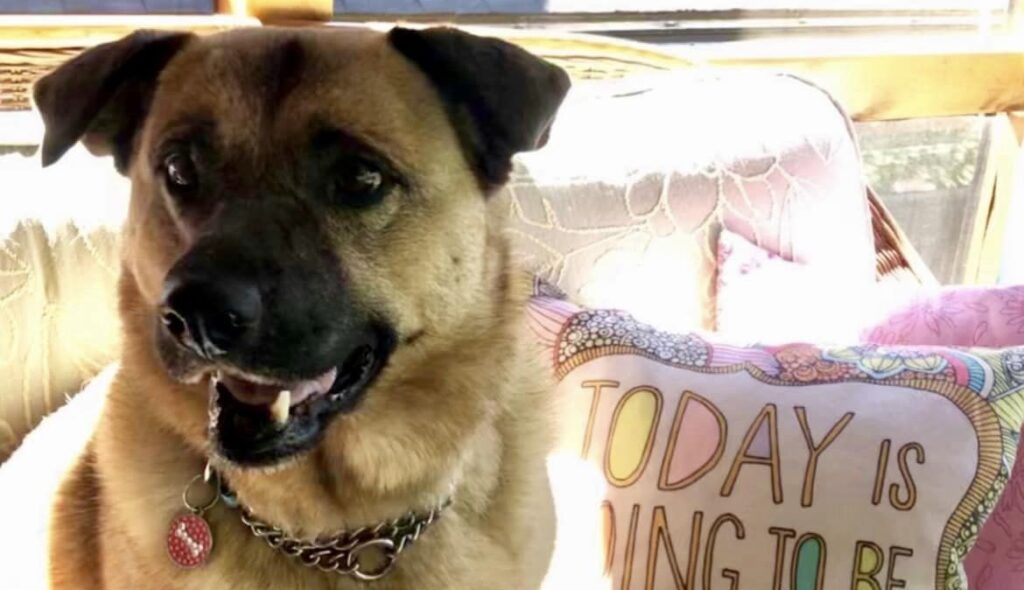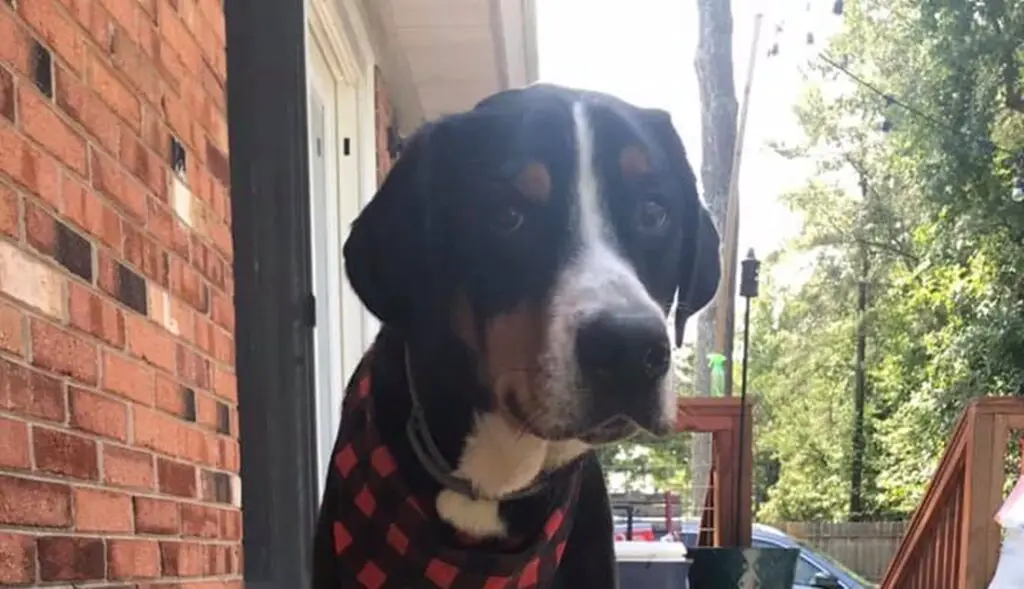Lymph nodes play a crucial role in a dog’s immune system, and being able to identify changes can be key in the early detection of various health issues.
In this blog post, we’ll guide you through the process of locating your dog’s lymph nodes, describing how they should normally feel, and highlighting the changes that might indicate a potential health problem.
Whether you’re a new pet owner or a seasoned dog lover, this information will help you keep a closer eye on your pet’s well-being.
Let’s dive in!
- Key Takeaway
- Where Can Lymph Nodes Be Felt In Dogs?
- What Do Dog Lymph Nodes Feel Like?
- How Do Healthy VS Swollen Dog Lymph Feel Like
- What Are The First Signs of Lymphoma In Dogs?
- What Do Swollen Lymph Nodes Look Like On Dogs?
- How Do I Recognise Lymphoma In My Dog?
- Are There Particular Areas of a Dog’s Body Where Swollen Lymph Nodes Are More Commonly Felt?
- FAQs
- Q: What are the symptoms of swollen lymph nodes in dogs?
- Q: How are swollen lymph nodes in dogs diagnosed?
- Q: What are the common causes of swollen lymph nodes in dogs?
- Q: What are the treatment options for swollen lymph nodes in dogs?
- Q: What is the prognosis for dogs with swollen lymph nodes?
- Q: Where are the lymph nodes located in a dog’s body?
- Q: What role does the lymphatic system play in dogs?
- Q: When should I check my dog’s lymph nodes?
- Q: Can swollen lymph nodes in dogs be a sign of a serious condition?
- In Conclusion
Key Takeaway
- Dog lymph nodes feel like small, firm, and movable lumps under the skin, similar to a pea or bean, but can become hard and swollen if the dog is fighting an infection or has a disease like cancer.
- Healthy dog lymph nodes feel like small, smooth, and movable lumps under the skin, while swollen lymph nodes are larger, harder, and may be immovable or painful to the touch.
Where Can Lymph Nodes Be Felt In Dogs?

Lymph nodes in dogs can generally be felt near the throat, behind the knees, and at the base of the tail.
Some lymph nodes are located deep inside the body, such as within the abdomen and along the intestinal tract, where they can’t be felt or seen.
However, there are several locations where lymph nodes can be palpated (felt) in dogs.
- Submandibular Lymph Nodes: These are located on either side of the lower jaw where it meets the neck. They might become enlarged due to local respiratory infections or dental disease.
- Superficial Cervical Lymph Nodes: These are found over the cranial shoulder joint and are easiest to palpate when the dog is standing.
- Lymph Nodes in the Armpits and Groin Area: These can also be felt, particularly if they are enlarged due to an infection, inflammation, or cancer.
- Lymph Nodes Behind the Knees: These are often visible and easily observed.
See also: Can Dogs Live Without Lymph Nodes?
What Do Dog Lymph Nodes Feel Like?

Healthy lymph nodes in dogs are usually small, round, and semi-hard, not easily felt unless they become enlarged, while swollen lymph nodes feel larger, firmer, or rubbery, and can often be easily detected just under the skin’s surface.
A healthy lymph node in dogs is usually small, round, uniform in shape and semi-hard, and it should not be hot or painful to touch.
Typically, they are the size of a marble or less, depending on the size of your pet. Most are not easily felt unless they become enlarged due to disease or infection.
On the other hand, swollen lymph nodes (a condition known as Lymphadenopathy) can feel like grapes just under the skin’s surface.
They can double in size overnight with diseases like lymphosarcoma.
Additionally, swollen lymph nodes are typically larger than normal, may feel firm or rubbery to the touch, and in some cases, they may be so large that they are visible on the surface of the skin.
Dogs with swollen lymph nodes may also exhibit discomfort when these areas are touched.
See also: Can Dog Lymph Nodes Be Removed?
How Do Healthy VS Swollen Dog Lymph Feel Like
- Healthy lymph nodes in dogs should feel fairly round, uniform in shape, and semi-hard. They are typically the size of a marble or less, depending on the size of your pet.
- They shouldn’t be hot or painful to touch.
- Usually, healthy lymph nodes are not enlarged and thus not easy to be felt (source: petmd.com).
- Swollen lymph nodes feel like grapes just under the skin’s surface.
- They can double in size overnight with diseases like lymphosarcoma.
- Swollen lymph nodes can vary in size, but they are typically larger than normal and may feel firm or rubbery to the touch.
- In some cases, the nodes may be so large that they are visible on the surface of the skin.
- Dogs with swollen lymph nodes may exhibit discomfort when these areas are touched.
See also: 9 Causes Of Swollen Lymph Nodes In Dogs
What Are The First Signs of Lymphoma In Dogs?
- Swollen lymph nodes: This is typically the first symptom in dogs with multicentric lymphoma. The lymph nodes in the neck, chest, armpits, groin, and behind the knees are often the most visible and easily observed.
- Loss of appetite: Dogs with lymphoma may experience a decreased appetite, which can lead to weight loss.
- Lethargy: Dogs with lymphoma may exhibit signs of fatigue or decreased energy levels.
- Increased thirst and urination: This can be a sign of systemic illness, including lymphoma.
- Other symptoms such as vomiting, belly pain, diarrhea, and weight loss can also be seen, especially in rare types of lymphoma like mediastinal lymphoma.
See also: How Big Are Dog Lymph Nodes?
What Do Swollen Lymph Nodes Look Like On Dogs?
Swollen lymph nodes in dogs can appear as small, soft lumps that are located just beneath the skin in various locations around your pet’s body.
They can be recognized by their round or oval shape and may feel a bit rubbery when palpated. If they become infected or inflamed due to an underlying medical condition, they may become larger than normal and even tender to the touch.
Swollen lymph nodes can also cause areas of discoloration on your pet’s skin that may indicate infection. If you find any lumps or swellings on your dog, it is important to contact your veterinarian right away for a professional diagnosis.
See also: Where Are Dog Lymph Nodes In Neck? (With Pictures)
How Do I Recognise Lymphoma In My Dog?
The most common symptoms of lymphoma in dogs are weight loss, lethargy or decreased activity levels, enlarged lymph nodes, and a pot-bellied appearance due to an enlarged abdomen caused by internal organ enlargement.
Other signs can include difficulty breathing or labored breathing, coughing, vomiting, diarrhea, fever, and bleeding from the nose. If your dog is displaying any of these symptoms it is important to seek veterinary advice as soon as possible.
See also: How To Check a Dog’s Lymph Nodes
Are There Particular Areas of a Dog’s Body Where Swollen Lymph Nodes Are More Commonly Felt?
Swollen lymph nodes in dogs can typically be felt in several areas of the body.
Here are key locations:
- Submandibular: These lymph nodes are located at the part of the dog’s neck that is near the jaw. However, salivary glands also dwell in this area and they can feel just like enlarged submandibular lymph nodes.
- Cervical: These are located under the back of the jaw.
- Pre-scapular: These lymph nodes are found between the shoulder and the neck.
- Axillary: These are located under the front legs.
- Inguinal: These lymph nodes are found in the inguinal region of the back legs.
FAQs
Q: What are the symptoms of swollen lymph nodes in dogs?
A: The symptoms of swollen lymph nodes in dogs can vary depending on the cause. Common symptoms may include a visible or palpable lump or swelling, discomfort or pain in the affected area, loss of appetite, lethargy, fever, and swollen lymph nodes in other parts of the body.
Q: How are swollen lymph nodes in dogs diagnosed?
A: Swollen lymph nodes in dogs are usually diagnosed through a physical examination by a veterinarian. Additional tests such as blood tests, biopsies, or imaging studies may be conducted to determine the underlying cause of the lymph node enlargement.
Q: What are the common causes of swollen lymph nodes in dogs?
A: Swollen lymph nodes in dogs can be caused by various factors including infections (such as bacterial or fungal), immune system disorders, cancerous growths, or even a reaction to certain medications. The underlying cause of the swollen lymph nodes will determine the appropriate treatment.
Q: What are the treatment options for swollen lymph nodes in dogs?
A: The treatment for swollen lymph nodes in dogs depends on the underlying cause. It may include medications such as antibiotics or antifungals for infections, chemotherapy for cancerous growths, or supportive care to manage symptoms. Your veterinarian will determine the most appropriate treatment for your dog based on the diagnosis.
Q: What is the prognosis for dogs with swollen lymph nodes?
A: The prognosis for dogs with swollen lymph nodes depends on the underlying cause. In some cases, treatment and management strategies can effectively resolve the issue. In other cases, the prognosis may be more guarded, especially if it is due to cancer. It is important to consult with your veterinarian for an accurate prognosis based on your dog’s specific situation.
Q: Where are the lymph nodes located in a dog’s body?
A: Dogs have multiple lymph nodes located throughout their body. Some common locations include the submandibular lymph nodes (under the jaw), peripheral lymph nodes (near joints and limbs), and the inguinal lymph nodes (in the groin area). However, lymph nodes can be found in other parts of the body as well.
Q: What role does the lymphatic system play in dogs?
A: The lymphatic system plays a crucial role in a dog’s immune system. It is responsible for carrying lymph, a fluid containing white blood cells, throughout the body. The lymphatic system helps to filter and remove waste products, toxins, and foreign substances and is closely associated with the lymph nodes.
Q: When should I check my dog’s lymph nodes?
A: It is a good idea to regularly check your dog’s lymph nodes as part of a routine physical examination. Paying attention to changes in the size, shape, or consistency of the lymph nodes can help identify any potential health issues that may require attention from a veterinarian.
Q: Can swollen lymph nodes in dogs be a sign of a serious condition?
A: Swollen lymph nodes in dogs can be a sign of various conditions, some of which may be serious. While not all cases are concerning, it is important to have your dog evaluated by a veterinarian if you notice any significant changes in their lymph nodes or if they show other accompanying symptoms such as illness or discomfort.
See also: Can Dogs Lymph Nodes Swell From Allergies?
In Conclusion
In conclusion, a dog’s lymph nodes are usually firm, semi-hard, and round, and move slightly under the skin.
They play a crucial role in your pet’s immune system, and changes in their size or texture may indicate health issues.
Regularly checking your dog’s lymph nodes can help in early detection of potential problems.
If you notice any changes such as swelling, hardness, or pain when touched, it’s essential to seek veterinary advice promptly.
Remember, your furry friend’s health is always worth your attention!





Leave a Reply